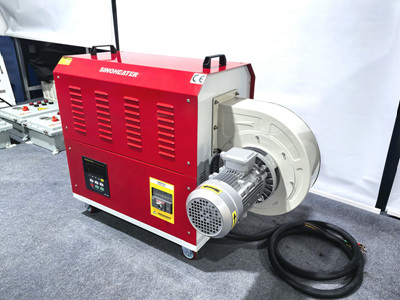Selecting a Heat Blower for High-Wind Environments: Key Considerations for Wind Resistance
When using a heat blower in areas prone to strong winds, its ability to withstand external forces while maintaining efficient heating becomes critical. Poor wind resistance can lead to instability, reduced performance, or even safety hazards. Below are essential factors to evaluate when choosing a device suited for such conditions.
Structural Stability and Weight Distribution
A heat blower’s resistance to wind starts with its physical design. Models with a low center of gravity are less likely to tip over, even when gusts strike from the side. Look for devices with wide bases or weighted bottoms that provide a stable foundation. Additionally, materials like reinforced plastic or metal frames enhance durability, preventing warping or cracking under pressure.
Some heat blowers incorporate adjustable feet or anti-slip pads to improve grip on uneven surfaces. These features are particularly useful in outdoor settings, where ground conditions may vary. For portable models, a retractable stand or locking mechanism can add stability during operation, ensuring the device stays upright despite sudden wind shifts.
Airflow Management and Wind Disruption
Strong winds can interfere with a heat blower’s internal airflow, reducing its heating efficiency. Opt for devices with sealed intake and exhaust vents to prevent debris or moisture from entering while maintaining consistent airflow. Vent designs that minimize turbulence, such as angled grilles or streamlined openings, help the unit function smoothly even in blustery conditions.
Another consideration is the placement of the heating element. Models with centrally located elements surrounded by insulated casings are less affected by external air currents. This setup ensures heat is distributed evenly without being dispersed by drafts. Some advanced designs even include internal baffles to redirect airflow, counteracting wind-induced disruptions.
Power and Control Settings for Variable Conditions
In high-wind environments, the ability to adjust output settings is crucial. Heat blowers with multiple fan speeds allow users to match the intensity of the airflow to the wind strength. Lower speeds are ideal for mild gusts, while higher settings can compensate for stronger drafts, ensuring consistent warmth delivery.
Thermostat precision is equally important. Devices with accurate temperature controls prevent overheating or underperformance when external conditions fluctuate. Look for models with digital displays or programmable settings, as they offer greater control over heating patterns. Some units even include wind-sensing technology that automatically adjusts output based on real-time environmental data.
Cable and Cord Management for Safety
Windy conditions increase the risk of tangled or damaged power cords, posing tripping hazards or electrical risks. Choose heat blowers with retractable cords or built-in storage compartments to keep cables organized and protected. Heavy-duty, insulated cords are also preferable, as they resist fraying or snapping under tension.
For outdoor use, ensure the power source is sheltered or elevated to avoid water exposure during storms. Grounding features and surge protection can further safeguard the device against electrical issues caused by wind-related movement or lightning strikes.
Portability and Secure Mounting Options
If the heat blower needs to be moved frequently, portability becomes a key factor. Lightweight models with ergonomic handles are easier to reposition, reducing the likelihood of accidents in windy settings. However, portability should not come at the expense of stability—some compact designs include locking wheels or carrying straps for secure transport.
For permanent installations, mounting brackets or wall attachments provide added security. These accessories ensure the device remains firmly in place, even during severe weather. Adjustable mounts also allow users to angle the heat blower optimally, directing warmth where it’s needed most without being affected by crosswinds.
By prioritizing these features, buyers can select a heat blower that performs reliably in high-wind environments. Structural robustness, airflow efficiency, and adaptive controls collectively ensure the device remains safe, stable, and effective, regardless of external conditions.




